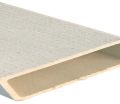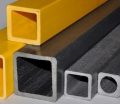
Petroleum FRP pipe is increasingly used in the petroleum industry due to its unique properties that make it ideal for harsh environments. FRP, or Fiberglass Reinforced Plastic, offers excellent resistance to corrosion, chemicals, and extreme temperatures, making it well-suited for transporting petroleum products. In petroleum applications, pipes are exposed to aggressive chemicals and high pressures, which can lead to degradation in traditional materials like steel. Petroleum FRP pipe addresses these challenges by providing a lightweight, durable solution that requires less maintenance and ensures long-lasting performance. Its strength, combined with its corrosion resistance, makes it an essential component in modern oil and gas infrastructure.
What Are Petroleum FRP Pipes?
Petroleum FRP pipes are specialized pipes made from Fiberglass Reinforced Plastic, designed for use in the extraction, transportation, and storage of petroleum products. These pipes combine the strength of fiberglass with the corrosion-resistant properties of plastic resins, creating a composite material that is exceptionally durable and well-suited for the harsh environments typical in the petroleum industry. FRP pipe bell and spigot joints are commonly used in these systems, providing secure, leak-free connections that are essential for maintaining the integrity of pipelines under high pressure and challenging conditions. Reliable petroleum FRP pipes for oil, gas & water transport. DN50-DN2000, low-pressure GRP solutions for fuel handling. Petroleum FRP pipes offer a reliable and long-lasting solution for managing petroleum resources efficiently, especially where traditional materials may fail due to corrosion, chemical exposure, or extreme temperatures.
GRP Pipe in Petroleum Applications
GRP, or Glass Reinforced Plastic, is a type of FRP that is specifically designed to handle the demanding conditions of petroleum operations. GRP pipes are used extensively in petroleum applications, including oil and gas extraction, refining, and transportation. These pipes offer several advantages that make them an excellent choice for the petroleum sector. Their corrosion resistance ensures they remain unaffected by the various chemicals and substances encountered in the petroleum extraction process. This characteristic is crucial for maintaining the integrity of pipelines and reducing the risk of leaks or failures.
In addition to corrosion resistance, GRP pipes are lightweight, which makes them easier to transport and install compared to traditional materials like steel or concrete. This ease of installation is particularly beneficial in remote or offshore petroleum sites where logistical challenges can increase the complexity and cost of pipeline construction. GRP pipes from GangLong Fiberglass are designed to withstand high pressures and temperatures, ensuring safe and efficient transport of petroleum products over long distances.
Used Fiberglass Pipe for Sale: Is It a Viable Option?
The idea of purchasing used fiberglass pipes for petroleum applications can be appealing due to potential cost savings. However, several factors must be carefully considered before opting for second-hand FRP pipes in a petroleum setting. One of the primary concerns is the condition of the used pipes. Over time, even durable materials like FRP can suffer from wear and tear, especially if they have been exposed to harsh chemicals, extreme temperatures, or physical stress.
When evaluating used fiberglass pipes, it is essential to conduct a thorough inspection and testing process to assess their structural integrity. This process involves checking for signs of damage, such as cracks, delamination, or corrosion. Non-destructive testing methods, like ultrasonic inspection, can help identify any internal flaws that may not be visible to the naked eye. It is also important to review the service history of the used pipes to understand the conditions they were exposed to and how they were maintained.
Another consideration when purchasing used fiberglass pipes is compliance with current industry standards. Over time, standards and regulations governing petroleum infrastructure may change, and older pipes may not meet the latest requirements. Ensuring that the used pipes comply with current standards is crucial for maintaining safety and avoiding potential legal and environmental liabilities.
While the cost savings of using second-hand FRP pipes can be significant, the potential risks must be weighed carefully. In some cases, the investment in new, high-quality FRP pipes from GangLong Fiberglass may be justified by the increased reliability, longer service life, and reduced risk of failure.
Inspection and Testing Procedures for Used Fiberglass Pipes
Before integrating used fiberglass pipes into a petroleum infrastructure, a rigorous inspection and testing process must be undertaken. Visual inspection is the petroleum dw frp pipe, where the pipes are examined for obvious signs of wear and damage, such as surface cracks, scratches, or discoloration. While visual inspection can reveal some issues, it is often not sufficient to assess the internal condition of the pipes.
Non-destructive testing methods, such as ultrasonic testing, provide a more comprehensive evaluation of the pipes’ internal structure. Ultrasonic waves are used to detect internal flaws, including delamination, voids, or wall thinning that could compromise the pipes’ integrity. Other methods like radiographic inspection and hydrostatic testing may also be employed to ensure the pipes can withstand the pressures they will encounter in service.
Chemical analysis is another important aspect of inspecting used fiberglass pipes. This analysis helps determine whether the resin and fiberglass have been compromised by exposure to harsh chemicals. Any degradation in the material can affect the pipe’s strength and corrosion resistance, potentially making it unsuitable for further use in petroleum applications.
After thorough inspection and testing, a decision can be made regarding the viability of the used pipes. Only pipes that pass all testing procedures and meet the necessary safety and performance standards should be considered for integration into petroleum infrastructure.
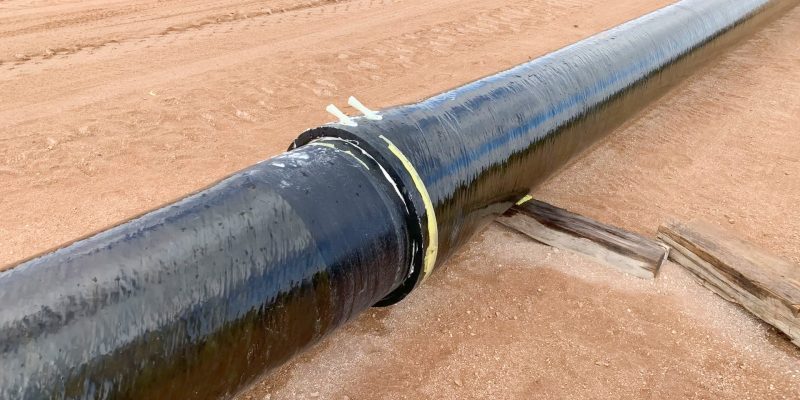
High Pressure Petroleum FRP Pipe
High Pressure Petroleum FRP Pipe refers to a composite pipe system designed specifically for use in the petroleum industry to handle high-pressure applications. These pipes are made from FRP (Fiberglass Reinforced Plastic), where the FRP pipe full form signifies its composition of fiberglass reinforcement and a polymer resin matrix. This combination provides exceptional strength, corrosion resistance, and durability, making it a reliable choice for demanding industrial environments.
Detailed Description
- Material Composition:
- Fibers: Glass fibers (commonly E-glass or S-glass) are used for strength and stiffness. In some cases, carbon fibers may be employed for enhanced properties.
- Resin Matrix: Thermosetting resins like epoxy, polyester, or vinyl ester provide chemical resistance and bind the fibers together.
- Applications in Petroleum Industry:
- Used for transporting crude oil, refined petroleum products, and natural gas.
- Suitable for environments with high pressure and corrosive conditions, such as offshore platforms, oil rigs, and chemical processing plants.
- Commonly employed in downhole tubing, gathering lines, and injection systems.
- Key Features:
- High Pressure Resistance: Designed to withstand operating pressures that can exceed 100 bar (1450 psi) or more, depending on the design and materials used.
- Corrosion Resistance: Excellent resistance to corrosion from harsh chemicals, seawater, and hydrocarbons, reducing maintenance costs and extending service life.
- Lightweight: Compared to traditional metal pipes like steel, FRP pipes are significantly lighter, simplifying handling, transportation, and installation.
- Low Thermal Conductivity: Offers insulation properties, reducing heat loss or gain during fluid transportation.
- Long Service Life: With proper installation and maintenance, these pipes can last decades under high-stress conditions.
- Manufacturing Process:
- Filament Winding: A common technique where fibers are impregnated with resin and wound around a rotating mandrel in specific patterns to achieve desired strength and performance characteristics.
- Pultrusion: For straight pipes, fibers are pulled through a resin bath and then shaped and cured in a heated die.
- Curing: Heat or UV curing ensures the resin hardens to form a robust, durable structure.
- Advantages over Metal Pipes:
- Corrosion-Free: Unlike steel, FRP does not rust or degrade in corrosive environments.
- Lower Weight: Reduces transportation and installation costs.
- Customizable Properties: The material composition can be tailored to specific project requirements.
- Reduced Lifecycle Costs: Lower maintenance needs and extended lifespan compared to traditional metal alternatives.
- Design Considerations:
- Pressure Rating: Pipes are designed for specific pressure classes based on the operational requirements.
- Temperature Range: FRP can operate within a wide temperature range but requires special consideration for extreme conditions (e.g., cryogenic or very high temperatures).
- Joint Systems: Includes threaded, flanged, or adhesive-bonded joints, ensuring secure and leak-proof connections.
High Pressure Petroleum FRP Pipes are increasingly popular in the oil and gas industry due to their superior performance, durability, and cost-effectiveness compared to traditional materials like steel and aluminum. Their adoption helps to meet the growing demand for sustainable and efficient infrastructure in challenging operating environments.
Effective Adhesive Bonding for FRP Pipe Bell and Spigot Joints
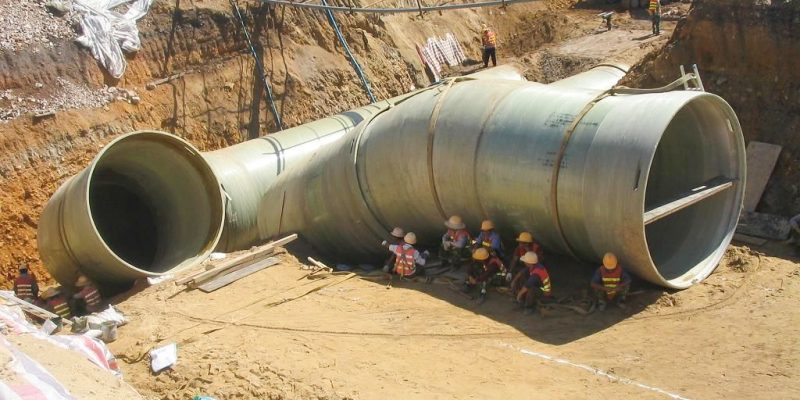
Petroleum FRP Pipe for Sale
Pricing
The price of Petroleum FRP (Fiber Reinforced Plastic) pipes can vary significantly based on several factors:
- Pipe Dimensions: Larger diameter and thicker pipes generally cost more due to the higher material usage.
Example: A 6-inch diameter FRP pipe may cost $40–$100 per meter, while a 12-inch pipe could range from $150–$300 per meter. - Pressure Rating: High-pressure pipes are priced higher because they require advanced materials and manufacturing techniques to meet the stress and durability requirements.
- Material Type: Pipes reinforced with carbon fibers or advanced resins (e.g., epoxy or vinyl ester) tend to be more expensive than those made with standard glass fibers and polyester resin.
- Quantity Ordered: Bulk orders typically qualify for discounts, as large orders reduce production and shipping costs.
- Customization: Pipes with special coatings, fittings, or chemical resistance properties will cost more due to the additional manufacturing processes involved.
Cost Breakdown
Understanding the cost components of Petroleum FRP pipes is crucial when planning a purchase:
- Material Costs: About 50–70% of the total cost is attributed to raw materials, such as fibers, resin, and additives, with the material type significantly affecting the price.
- Manufacturing Costs:
- Labor: Skilled labor is required for processes like filament winding or pultrusion, adding to manufacturing costs.
- Curing and Quality Assurance: Additional testing, such as pressure and leak resistance testing, increases the overall cost.
- Logistics and Transportation: While FRP pipes are lightweight, they can be bulky, which impacts shipping costs. Special packaging might also be required to ensure the pipes arrive undamaged.
- Installation Costs: FRP pipes are easier to install compared to metal pipes, but specialized equipment for joining systems (e.g., adhesive bonding or flanged joints) may still be necessary, adding installation costs.
Purchasing Options
There are various ways to purchase Petroleum FRP pipes, each offering different advantages:
- Direct Purchase from Manufacturers:
Contacting manufacturers directly for quotes allows for customization and technical support based on specific project needs, such as diameter, pressure rating, length, and quantity. Purchasing directly often leads to lower costs. - Through Distributors:
Purchasing through distributors or agents who represent multiple brands can be beneficial for faster delivery from local stock. This option also allows for the flexibility of mixing and matching products to meet project requirements. - Online Marketplaces:
Online platforms provide an easy way to compare prices, check product availability, and read customer reviews. However, it is important to verify the authenticity of sellers to avoid substandard or counterfeit products.
Negotiation Tips for Better Pricing
Negotiating with suppliers can help secure better pricing and terms:
- Bulk Orders: Always ask for discounts when purchasing in large quantities. Suppliers are often willing to reduce prices for bulk orders due to the lower handling and shipping costs.
- Customization Packages: Request all-inclusive pricing that covers pipes, fittings, coatings, and any special customization needs to avoid hidden costs.
- Shipping Terms: Negotiate favorable shipping terms, such as opting for FOB (Free on Board) to minimize shipping costs, or DDP (Delivered Duty Paid) if importing, to simplify logistics and avoid additional import duties.
- Long-Term Contracts: Consider establishing a long-term supply contract with the manufacturer or distributor to lock in better prices for future orders.
Payment and Delivery
Express Manufacturing: For expedited delivery, express manufacturing options are available at an additional cost.
Payment Terms:
Small Orders: Payment is typically required upfront for small orders.
Large Orders: For large orders, suppliers usually request 30% upfront, with the remaining 70% due upon delivery or completion of production.
Delivery Options:
Standard Lead Time: The lead time for manufacturing and delivery is usually between 4–8 weeks, depending on the production schedules and any customization requests.
The Key of Petroleum FRP Pipe
Petroleum FRP pipe refers to Fiberglass Reinforced Plastic pipes specifically designed for use in the petroleum industry. These pipes are engineered to handle the unique challenges posed by the extraction, transportation, and storage of petroleum products. Petroleum FRP pipe is known for its durability, resistance to corrosion, and ability to withstand harsh environmental conditions, such as exposure to aggressive chemicals and high temperatures. The density of FRP pipe also plays a vital role in its performance, as higher density typically enhances strength and resistance to deformation under pressure.This makes it an ideal choice for the petroleum industry, where pipes are often subjected to extreme conditions that can degrade traditional materials. The lightweight nature of FRP, combined with its high strength, allows for easier installation and long-term reliability in petroleum-related projects.
Advantages of Petroleum FRP Pipe
The advantages of petroleum FRP pipe are numerous, making it a preferred choice for many petroleum-based applications. These benefits include:
Corrosion Resistance
Petroleum FRP pipe is highly resistant to corrosion, which is a common problem in the petroleum industry. Petroleum products, along with chemicals used during the extraction and refining processes, can quickly degrade traditional materials. However, the composite structure of FRP, reinforced with fiberglass and high-quality resins, ensures that it does not react with these chemicals, preventing corrosion and extending the lifespan of the pipe.
One of the primary benefits of GangLong Fiberglass tubing is its exceptional resistance to corrosion. In oil and gas wells, tubing is often exposed to corrosive substances like acids and saline water. Unlike steel, which corrodes under such conditions, fiberglass tubing from GangLong Fiberglass maintains its structural integrity, thereby extending the operational life of the well.
High Strength-to-Weight Ratio
Fiberglass tubing offers a remarkable balance of strength and weight, making it significantly easier to transport and install, especially in offshore drilling platforms where weight is a critical factor. The fiberglass tube strength ensures that despite its lightweight nature, the tubing can withstand high pressures and harsh downhole conditions, providing reliable performance in demanding oil and gas operations.
Lightweight and Strong
Despite being much lighter than traditional materials like steel, petroleum FRP pipe offers excellent strength, which makes it easier to transport and install. The reduced weight of FRP means that less labor and equipment are required for installation, saving both time and money. Furthermore, the strength of FRP ensures that it can handle the high pressures commonly encountered in oil and gas operations.
Temperature and Pressure Resistance
Petroleum FRP pipe is capable of withstanding extreme temperatures, making it ideal for use in high-temperature environments such as refineries and oil fields. The material is designed to maintain its structural integrity even when exposed to fluctuating temperatures. Similarly, uv resistant frp pipe ensures durability in outdoor applications, combining resistance to UV radiation with the ability to handle high pressures required for transporting petroleum products, making it equally effective for pipelines and storage systems.
Low Maintenance
Another significant advantage of petroleum FRP pipe is its low maintenance requirements. Traditional materials like steel often require frequent inspections and repairs due to corrosion or wear and tear. Petroleum FRP pipe, however, is much more durable and requires fewer repairs, reducing long-term maintenance costs. Its resistance to both chemical and environmental factors ensures that the pipes remain functional for extended periods without the need for costly repairs.
Environmentally Friendly
Petroleum FRP pipe is also considered environmentally friendly due to its long lifespan and lower maintenance needs. Its durability reduces the frequency of replacements, resulting in less waste. Furthermore, the energy required to produce FRP is lower than that of traditional materials, contributing to a reduced environmental impact. As industries move toward more sustainable practices, petroleum FRP pipe is becoming a key material in eco-friendly infrastructure.
GRP Pipes in Petroleum Industry Applications
Petroleum Extraction
GRP pipes are essential for transporting raw petroleum from drilling sites to processing facilities. Their high resistance to corrosion from saltwater, chemicals, and extreme pressures makes them ideal for offshore rigs and remote extraction sites. GRP pipes resist degradation from chemicals like hydrogen sulfide and sulfur compounds, ensuring longevity. Additionally, their ability to withstand high pressures makes them suitable for both land-based and offshore drilling operations.
Petroleum Transportation
GRP pipes are widely used in long-distance petroleum transportation. Their lightweight nature allows for easier installation, particularly in challenging terrains or offshore locations. GRP pipes can withstand high-pressure conditions encountered in long pipelines, making them more reliable than traditional metal pipes. The smooth inner surface also reduces friction, improving fluid flow and energy efficiency when transporting large volumes of petroleum.
Petroleum Storage
GRP pipes are commonly used in petroleum storage systems to hold products before processing or transportation. These pipes can endure exposure to chemicals, temperature fluctuations, and mechanical stress. GRP’s resistance to corrosion from chemicals like acids, alkalis, and petroleum derivatives ensures the safety and longevity of storage facilities. Their non-reactivity makes them an ideal choice for containing volatile petroleum products like gasoline, kerosene, and crude oil, ensuring leak-free operations.
Installation Techniques for Petroleum FRP Pipe
Proper installation of petroleum FRP pipe is essential to ensure its long-term performance. Installation techniques can vary depending on the specific application, but there are some general best practices to follow:
Pre-Installation Preparation
Before installation, it is important to ensure that the FRP pipes are properly stored and handled to prevent damage. Although FRP is highly durable, it can be susceptible to cracking if not handled correctly. Additionally, the installation site should be thoroughly prepared to ensure that the pipes are properly aligned and supported. If the system includes petroleum FRP pipe railings for added safety or structural support, these should also be inspected and aligned at this stage to ensure they do not interfere with the pipe’s installation process.
Joining Methods
Petroleum FRP pipe can be joined using a variety of methods, including adhesive bonding, mechanical connections, and flanged joints. The specific method used will depend on the application and the environmental conditions. Adhesive bonding is a common method for joining FRP pipes, as it provides a strong, watertight seal that can withstand the pressures and temperatures typically found in petroleum applications. FRP pipe racks can also play a role during the installation phase by keeping the petroleum pipes aligned properly for easier joining, especially in complex pipeline systems.
Support Systems
When installing petroleum FRP pipe, it is important to ensure that the pipes are properly supported to prevent sagging or damage over time. This is particularly important for long pipelines, where improper support can lead to stress on the pipes, potentially causing them to crack or break. The support system should be designed to accommodate the weight of the pipes and any external forces, such as wind or seismic activity.
Maintenance and Lifespan of Petroleum FRP Pipe
Regular Inspections and Preventive Maintenance
Although FRP pipes require minimal maintenance, regular inspections are essential to ensure they remain in good condition. These inspections help identify early signs of damage or wear, such as cracks or abrasions. Regular checks on the pipe’s joints, bends, and stress points prevent more significant issues and ensure the system operates efficiently, extending the lifespan of the pipeline.
Addressing Damage Promptly
FRP pipes are durable, but cracks or other damage can compromise their integrity. Prompt repairs are crucial to prevent further degradation, leaks, or potential failures. FRP pipes can be easily repaired using specialized adhesives or mechanical connections. Quick action minimizes the risk of downtime and ensures that the pipeline continues to function safely and efficiently with minimal disruption.
Longevity and Durability
FRP pipes offer a long lifespan, typically lasting between 30 to 50 years. Their resistance to corrosion, extreme temperatures, and chemical exposure makes them ideal for petroleum applications. Unlike metal pipes, which may degrade over time, FRP pipes maintain their structural integrity and performance, reducing the need for frequent replacements and minimizing long-term maintenance costs.
Repair and Maintenance Costs
Maintaining FRP pipes is cost-effective due to their durability and ease of repair. Minor damage can be fixed quickly using repair kits and adhesives, reducing the need for expensive downtime or pipe replacements. The overall repair costs are lower compared to traditional materials, providing long-term savings and ensuring efficient operation with minimal disruption to petroleum operations.
Case Studies of Petroleum Frp Pipe Systems in Action
The effectiveness of GangLong Fiberglass piping systems in the petroleum industry is well-documented through various case studies. In one example, an offshore oil platform needed a piping system capable of withstanding saltwater exposure, high pressure, and fluctuating temperatures. GangLong Fiberglass pipes were chosen for their corrosion resistance and robustness in harsh offshore environments. Over several years, these pipes demonstrated exceptional performance, maintaining structural integrity and ensuring the safe transport of oil and gas.
In another instance, a refinery struggling with corrosion issues in its steel piping system decided to replace it with GangLong Fiberglass pipes. This switch eliminated frequent maintenance and repair needs associated with steel pipes, providing a long-lasting solution. Additionally, the smooth interior of the GangLong Fiberglass pipes improved flow efficiency, resulting in lower energy costs for the facility.
These case studies underscore the reliability and versatility of GangLong Fiberglass piping systems in diverse petroleum industry environments. Their successful application highlights their role in enhancing the safety, performance, and longevity of petroleum infrastructure.
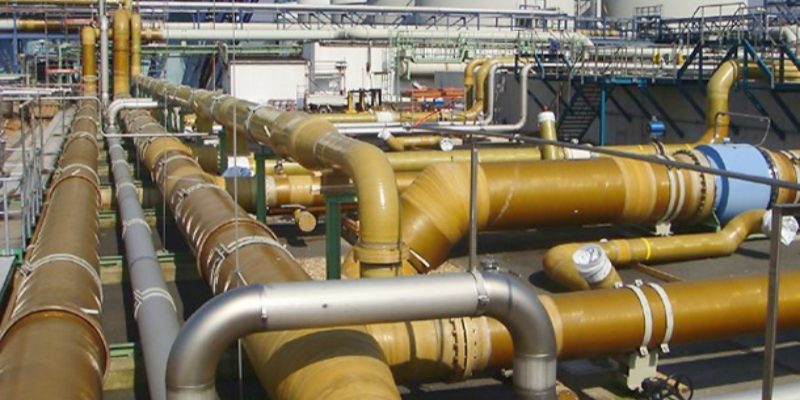
Best Practices for Installing FRP Pipe Bridge on Industrial Systems
GangLong Fiberglass: Advanced Solutions for Petroleum FRP Pipe Industry Applications
FRP pipe experts in the context of oil and gas operations focus on the qualification and compliance of fiberglass tubing to ensure suitability for demanding environments. These experts ensure that fiberglass tubes meets industry-specific standards for performance under high-pressure, high-temperature, and corrosive conditions commonly found in oil and gas extraction and transport. They perform rigorous testing and validation processes to verify the tubing’s durability, chemical resistance, and structural integrity. This ensures that fiberglass tubing is compliant with regulatory and safety standards, making it a reliable choice for critical oil and gas applications.
Key Features of GangLong Fiberglass Tubing Solutions
Customizable Design
GangLong Fiberglass offers flexible solutions, including large diameter fiberglass tube for applications requiring greater capacity and strength. We provide various diameters, lengths, and pressure ratings, ensuring that operators have reliable and efficient options for their specific needs.
Chemical Resistance
In addition to corrosion resistance, our fiberglass products offer protection against a wide range of chemicals, including hydrocarbons, acids, and brine. This ensures the safe transport of substances, preventing leaks and contamination.
Performance in Extreme Conditions
GangLong Fiberglass tubing is engineered to withstand extreme conditions, such as high-pressure environments, fluctuating temperatures, and exposure to aggressive substances. These features make our tubing a preferred choice for both onshore and offshore oil and gas operations.
GangLong Fiberglass Piping Systems
GangLong Fiberglass piping systems represent a major advancement in the petroleum sector. These systems are designed to withstand the challenging conditions of the petroleum industry, including exposure to corrosive chemicals, high pressure, and temperature variations. Our advanced composite materials offer unparalleled strength and resistance to both internal and external corrosive elements, making them a reliable and long-lasting choice.In addition to the high-performance pipes, the China FRP pipe saddle is an integral part of the system, providing crucial support and stability. The saddle ensures that the pipes remain securely in place, preventing misalignment or damage during operations, and contributing to the overall durability and longevity of the infrastructure.
Versatility in Petroleum Applications
GangLong Fiberglass pipes, including petroleum FRP pipes, are suitable for various petroleum applications, including wellhead connections, flow lines, and transportation pipelines. The multi-layer construction allows the pipes to handle high-pressure conditions without compromising their structural integrity. This makes them ideal for transporting crude oil, natural gas, and refined petroleum products.
Efficiency and Reduced Maintenance
Our piping systems are designed to minimize maintenance requirements, ensuring a long service life even in harsh conditions. The smooth inner surface of the pipes reduces friction and flow resistance, which enhances the efficiency of fluid transport, resulting in significant energy savings. This feature is particularly beneficial for large-scale petroleum operations where efficient fluid movement is essential.
Long-Term Cost Savings
By reducing the need for frequent maintenance and offering increased service life, GangLong Fiberglass pipes significantly lower operational costs over time. Their durability and resistance to corrosion reduce the likelihood of costly repairs, downtime, and replacements. In addition, the energy efficiency gained from the smooth inner surface further enhances overall savings in energy consumption, making these pipes a cost-effective solution for long-term petroleum infrastructure.
Benefits of GangLong Fiberglass Pipes in the Petroleum Industry
Exceptional Corrosion Resistance
GangLong Fiberglass pipes are built to withstand exposure to harsh chemicals, saltwater, and other corrosive substances commonly encountered in petroleum environments. This corrosion resistance reduces the risk of leaks and environmental contamination, ensuring the integrity of the pipeline.
High-Pressure Endurance
GangLong Fiberglass pipes can endure extreme pressures typically experienced during petroleum extraction and transportation. Their high-pressure tolerance prevents deformation or cracking, ensuring secure and safe transport of petroleum products. This makes them ideal for offshore drilling platforms and deep-well extraction sites.
Lightweight for Easy Installation
Compared to traditional steel pipes, GangLong Fiberglass pipes are much lighter, simplifying handling and installation. This lightweight feature is especially advantageous in remote or offshore locations where logistics can be complex and costly. The reduced weight translates to lower labor costs and shorter installation times, making it a cost-effective solution without compromising strength or durability.
The Future of Petroleum FRP Pipe in the Oil and Gas Industry
As the oil and gas industry advances, the use of petroleum FRP (Fiber Reinforced Plastic) pipes is expected to increase, driven by the continuous improvements in materials science. These innovations promise to enhance the already exceptional properties of FRP, such as corrosion resistance, strength, and durability. With better performance characteristics, FRP pipes will become even more reliable and cost-effective, providing long-term solutions for transporting petroleum products across challenging environments.
Technological Advancements in Materials Science
Ongoing research and development in materials science are likely to introduce new composite materials and production techniques that enhance the performance of FRP pipes. Future advancements may include improved resistance to chemicals, higher pressure tolerance, and greater flexibility, making FRP pipes even more suitable for a broader range of applications in the oil and gas industry. Additionally, new manufacturing processes could reduce production costs, making FRP an even more economically viable option for petroleum infrastructure.
Sustainability and Environmental Impact
As the oil and gas sector faces increasing pressure to adopt sustainable practices, the use of petroleum FRP pipes is aligned with emerging environmental goals. FRP pipes are manufactured with less energy than traditional materials like steel, and their long lifespan reduces the need for frequent replacements. Additionally, the recyclability of FRP materials ensures a lower environmental footprint. As the industry focuses more on reducing greenhouse gas emissions and minimizing waste, FRP pipes will play a key role in achieving these sustainability objectives.
Enhanced Cost-Effectiveness
Petroleum FRP pipes are already known for their cost-effectiveness due to their long lifespan and low maintenance needs. As the performance of these pipes improves and manufacturing processes become more efficient, the upfront cost of FRP pipes is expected to decrease, making them even more accessible to oil and gas operators. In addition to lower material costs, FRP’s ease of installation and repair will continue to reduce labor and downtime expenses, further contributing to its long-term cost-effectiveness.
Role of Innovation in Future Applications
Manufacturers, such as GangLong Fiberglass, are constantly innovating and developing new FRP products to meet the evolving needs of the oil and gas industry. These innovations are not only focused on improving the physical properties of FRP pipes but also on developing products that are better suited for specialized applications, such as high-pressure pipelines, deep-water installations, or high-temperature environments. The continued innovation in FRP technology will ensure that these materials remain at the forefront of pipeline infrastructure, meeting the growing demands of the oil and gas industry.
Best Practices for Ensuring Effective FRP Pipe Cladding
FAQs about Petroleum FRP Pipe
In the oil and gas industry, FRP stands for Fiberglass Reinforced Plastic, which is used extensively for piping, tanks, and other infrastructure due to its excellent resistance to corrosion, chemicals, and harsh environmental conditions. FRP piping is favored in oil and gas operations because it can withstand exposure to aggressive chemicals and high temperatures without degrading over time. This makes it a reliable solution for transporting oil, gas, and other chemicals. Additionally, FRP materials are lightweight, reducing the cost and complexity of transporting and installing them in remote or offshore locations. FRP’s durability and long lifespan make it an ideal choice for oil and gas projects that require robust, low-maintenance solutions.
While FRP pipes offer many advantages, there are a few disadvantages to consider. One of the main drawbacks is the higher initial cost compared to traditional materials like PVC or concrete. This higher cost is due to the specialized manufacturing process and materials used in FRP production. Additionally, FRP pipes can be more brittle than metals, which means they can be more prone to damage under impact or heavy loads. Handling and installation must be done carefully to avoid cracking or other damage. Furthermore, although FRP is highly resistant to corrosion, it may not perform as well in environments with constant UV exposure unless additional protective coatings are applied.
FRP (Fiberglass Reinforced Plastic) pipes and PVC (Polyvinyl Chloride) pipes differ in several key ways. FRP pipes are made from a combination of fiberglass and plastic resins, offering higher strength, greater durability, and superior resistance to corrosion compared to PVC. FRP pipes are commonly used in industrial and commercial applications where exposure to chemicals, high temperatures, or abrasive materials is a concern. On the other hand, PVC pipes are made from a type of plastic that is less resistant to extreme conditions, but they are often used in residential plumbing and irrigation due to their lower cost and ease of installation. While PVC is suitable for low-pressure applications, FRP is preferred for high-pressure, high-stress environments where long-term reliability is critical.

As the editor of GangLong Fiberglass, I have years of experience and in-depth research, focusing on cable tray products, fiberglass solutions, and grille systems. I incorporate years of industry insights and practical experience into every content, committed to promoting the progress of the industry. At GangLong Fiberglass, my commitment is reflected in every product, from innovative cable trays to durable fiberglass solutions and sturdy grille systems. As an authoritative voice in the industry, my goal is to provide valuable information to professionals and businesses and promote forward-looking solutions.

